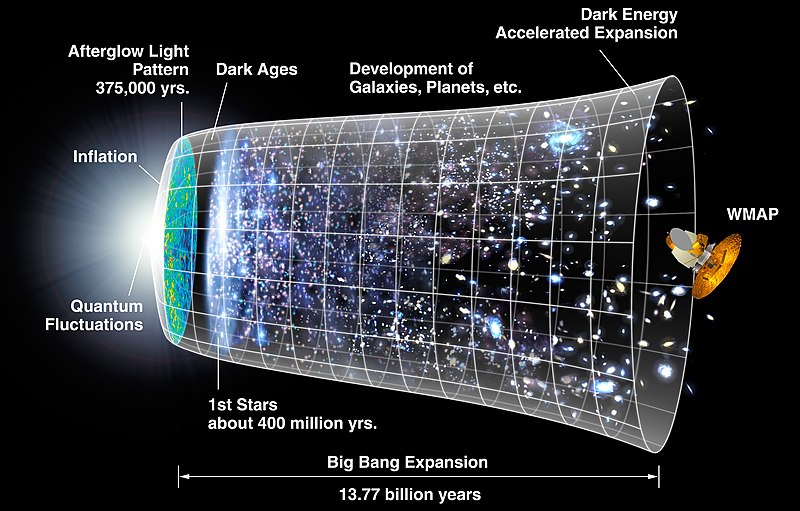
Caption: Timeline of the universe.
Maybe TOE can explain the universe, but maybe not---it might depend on what one counts as an explanation.
In the diagram, the 2-dimensional time slices represent 3-dimensional space at each epoch.
The slices grow from THE BEGINNING (which may be an unexpanded piece of the multiverse if that exists), very rapidly at first (which is the cosmic inflation if that happened) and then more slowly.
The growth is the expansion of the universe---which means the growth of space itself which is explainable in the theory of general relativity of Albert Einstein (1879--1955). It's not a growth into anything it seems. It's just a scaling up of space with the surrounding multiverse (if that exists) not noticing.
You and me, the planets, the stars, the galaxies, and probably the galaxy clusters are NOT expanding---all of these are gravitationally bound---it's the space between the galaxies and/or galaxy clusters that is growing.
The rapid phase is cosmic inflation from a minute early universe (embedded in the multiverse if that exits) and the slow phase is ordinary cosmology from a hot dense phase (the Big Bang) to the present.
In the Big Bang phase, a hot gas of mainly hydrogen and helium forms.
The gas cools with the expansion of the universe.
Gravity causes the gas to clump into galaxy superclusters, galaxy clusters, galaxies and stars.
-
Initial density perturbations after the
inflation
seed the growth of clumps.
Denser regions grow denser and less dense regions grow less dense.
Cosmic evolution before the Big Bang (i.e., the multiverse and inflation) is much more speculative---one of those deep mysteries of modern physics.
It wouldn't be extremely surprising if the multiverse and inflation were just plain wrong.
Theories have different statuses as mentioned above.
Credit/Permission: NASA /
WMAP Science Team,
before or circa 2006
(uploaded to Wikipedia
by User:ArseniureDeGallium,
2006) /
Public domain.
Image link: Wikipedia.
Local file: local link: cosmos_history_short.html.
File: Cosmology file:
cosmos_history_short.html.